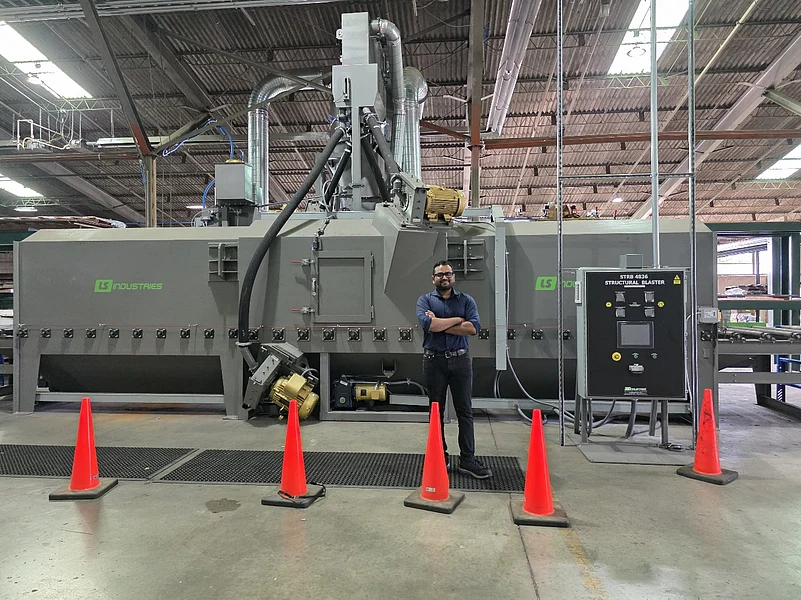The global industrial machinery sector is undergoing a fundamental transformation. Across defense, aerospace, rail, structural steel, and heavy fabrication, manufacturers are under growing pressure to innovate faster, operate more sustainably, and deliver at unprecedented scales. Traditional “one size fits all” machines can no longer meet the demands of environments where payloads reach tens of thousands of pounds, safety regulations tighten yearly, and efficiency must coexist with environmental responsibility.
Governments are enforcing stricter compliance standards, while end users expect higher productivity with lower operating costs and minimal labor exposure to hazardous processes. In this setting, automation, digitalization, and lifecycle sustainability have become essential elements of modern machine design.
For professionals like Utkarsh Singh, an industrial machinery expert, this shift represents both a challenge and an opportunity: to build systems that balance power, precision, safety, and environmental performance.
Over his career, Utkarsh has contributed to the design and delivery of more than 35 custom industrial machines across sectors from shot blasting and burn-off ovens to conveyors and high-capacity dust collectors. During his tenure at LS Industries, a leader in surface preparation and cleaning systems, he worked on solutions that demonstrated how large-scale customization could coexist with repeatable engineering and cost efficiency.
One example is a 100 cubic foot naval slat blaster, designed to handle payloads of nearly 20,000 pounds. With an enclosed eight-minute cycle, HEPA-equipped 12,000 CFM air capture, and automated control systems, it achieves consistency while significantly reducing operator exposure. Only a few machines of this class exist globally, three of which are operational. A brief look at its functioning can be seen in this demonstration video.
Utkarsh has also contributed to programs for major naval and air force facilities, leading efforts from design and fabrication to commissioning and training. His work includes innovations such as a blast wheel with quick-connect blade assembly to minimize downtime, and the use of cost-effective materials that reduce long-term ownership costs. At trade events such as FABTECH, SEMA, and IMTS, his technical presentations have explored how scaling customization can improve performance without compromising safety or sustainability.
These advancements have translated into visible operational gains: improved throughput, energy savings, and reduced carbon footprint. Processes that once took an hour now run in under ten minutes, increasing capacity severalfold. Energy efficient systems have also helped lower emissions and improve air quality through HEPA grade dust collection and sealed enclosures.
From an engineering standpoint, Utkarsh emphasizes that measurable customization depends on a core architecture built around standardized modules conveyors, wheel assemblies, filtration systems, and control libraries adapted as per sector-specific needs. Safety, he believes, should be embedded into design, not left to training. Environmental considerations now define performance as much as speed or power, influencing enclosure design, filtration efficiency, and energy consumption metrics.
Interestingly he also highlights the importance of lifecycle thinking designing with maintainability, modularity, and total cost of ownership in mind. This approach not only extends equipment life but also simplifies long term maintenance and resource management.
Looking ahead, Utkarsh foresees artificial intelligence reshaping industrial machinery. Integrating AI with programmable logic controllers (PLCs) can help machines monitor real-time efficiency, predict wear, and optimize energy use all within strict safety boundaries. Rather than replacing operators, AI would enhance their capacity to make data-informed decisions and maintain consistency across complex operations.
In his words,
“Machines of the future will not just be built to work harder; they will be built to work smarter, safer, and cleaner.”
As industry continues to evolve, Utkarsh Singh’s perspective reflects a broader shift: toward machines that are not only powerful but responsible, where performance, safety, and sustainability form the foundation of industrial progress.
About Utkarsh Singh
Utkarsh Singh is an industrial machinery innovator specializing in engineering large scale, intelligent systems that combine power, precision, and sustainability. His expertise spans automation, surface preparation, and high capacity cleaning systems across defence, aerospace, and heavy fabrication industries. Over his career, he has delivered more than 35 custom built machines including naval slat blasters, industrial washers, and advanced dust collectors that have set new benchmarks in safety, efficiency, and environmental performance. Through his leading designs, Utkarsh has transformed industrial operations, proving that the future of machinery lies in building smarter, safer, and cleaner systems.


























